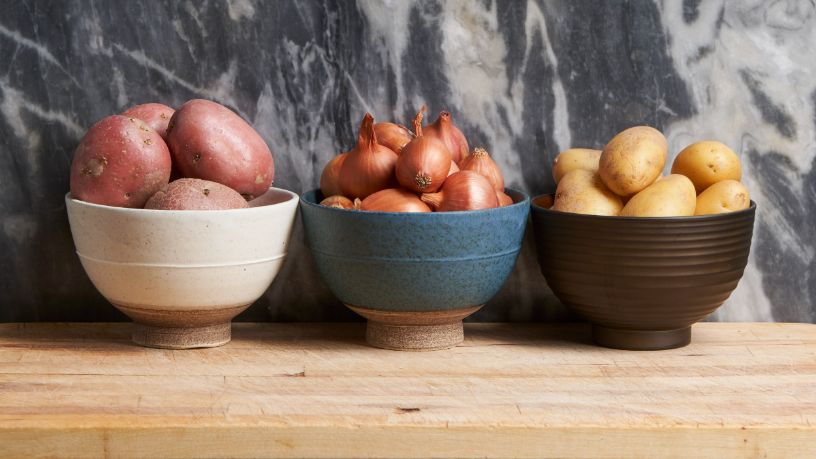Discover some home cooking and shopping tips to help you save money.
On this page
Key takeaways
Creating a food budget and separating your wants from your needs will help you to manage your money.
A little kitchen creativity can go a long way.
As a student living out of home, I know it can be a struggle to prepare meals consistently, let alone ensure they’re nutritious and budget friendly.
So, here are my 5 tips for enjoying healthy eating without breaking the bank.
Cook at home
Cooking at home is generally cheaper and healthier than eating out or takeaway.
If your cooking repertoire is currently limited to toast and pasta, don’t worry, we’ve all been there! While it can take some time and effort, learning to cook healthy meals is fun and ultimately a cool life skill to have.
A good place to start your healthy cooking adventure is to:
- plan healthy meals. I find the best way to avoid dining out or takeaway, especially during busy study weeks, is to plan ahead and meal prep. Cookbooks and food websites are great for recipe inspiration.
- make a shopping list. Sticking to a list helps me avoid sneaky diversions to the snack aisles.
- cook in bulk. With large portions, I can pack lunch for the next day or even freeze a week’s worth of meals.
Separate want from need
If you’re like me and have a soft spot for eating out, this advice is for you. Split your food budget into 2 categories: one for wants, the other for needs.
Having only one category in your food budget makes it easier to rationalise spending more money on restaurant food, and therefore going over budget.
So, I find separating food into 2 categories helps me keep track of my spending and eating habits. My categories look like this:
- Category 1, essentials (needs): Ingredients for my planned, healthy meals at the grocery store or market.
- Category 2, non-essentials (wants): Discretionary spending on things like snacks, desserts or eating out with friends.
I find having 2 separate bank cards (or spending accounts) also helps me keep tabs on how much I’m spending in each category, making it easier for me to refrain from cheat meals and running over budget.
Buy fresh or frozen
Fresh produce is second-to-none, but it can be expensive. Especially when it’s not in season.
Since the nutritional value of frozen produce is similar to fresh produce, buying frozen can sometimes be more convenient and affordable.1
For example, frozen berries are perfect for smoothies and snap-frozen vegetables are great for soups.
Pro tip: Instead of purchasing frozen bananas, freeze freshly sliced bananas yourself for a cheaper option.
Try plant-based alternatives
While health foods certainly have a reputation for being on the pricy side, the healthy option doesn’t always have to be the more expensive one.
I find that eating more plant-based meals is a great way to get my 5 serves of veg a day and is less expensive than most meat or fish proteins. I love doing this by trying new cuisines or recipes, such as Japanese, Vietnamese or Mediterranean meals.
If you’re buying ingredients that are common in Asian dishes (like tofu, soba noodles or rice paper), they’re usually much cheaper at Asian grocery stores than larger supermarket chains.
Get creative in the kitchen
If you’ve got a bit more time on your hands, making your own food from scratch is a great way to spend less on food while also keeping track of exactly what you’re putting into your body. Plus, you’ll have a bit of fun while you’re at it!
Recently, I made my own sourdough bread (it’s a work in progress) and kimchi.
You can also get creative with substitutions, like frozen fruit topped with dark chocolate instead of ice cream, or home-made matcha tea instead of takeaway coffee.
A bit of planning, food-savviness and creativity can go a long way when it comes to healthy eating on a budget. And, if you’re like me, eating healthy while saving money will always put a smile on your dial!

At Bupa, trust is everything
Our health and wellbeing information is regularly reviewed and maintained by a team of healthcare experts, to ensure its relevancy and accuracy. Everyone's health journey is unique and health outcomes vary from person to person.
This content is not a replacement for personalised and specific medical, healthcare, or other professional advice. If you have concerns about your health, see your doctor or other health professional.
1Li, L., Pegg, R., Eitenmiller, R., Chun, J., & Kerrihard, A. (2018). Selected nutrient analyses of fresh, fresh-stored, and frozen fruits and vegetables. Journal of Food Composition and Analysis, 59, 8-17.
You might also like...
Vegetarian and plant-based diets: What’s the difference?
Food trends may come and go, but eating more plants and less meat might be here to stay.
Do potatoes count as one of your 5 a day?
Hot chips, roast potatoes and a good old-fashioned creamy mash. Potatoes are vegetables, but are they healthy enough to count as one of your 5 a day?
Healthier versions of your favourite comfort food
Eating a healthier diet doesn’t mean you have to give up all your favourite comfort foods. Check out these recipe tips for delicious, nutritious meals.
Can multivitamins fill gaps in your nutrition?
Supplements are everywhere, from entire supermarket aisles to ads on TV. But can supplements compensate for a poor diet or prevent you from getting sick?





